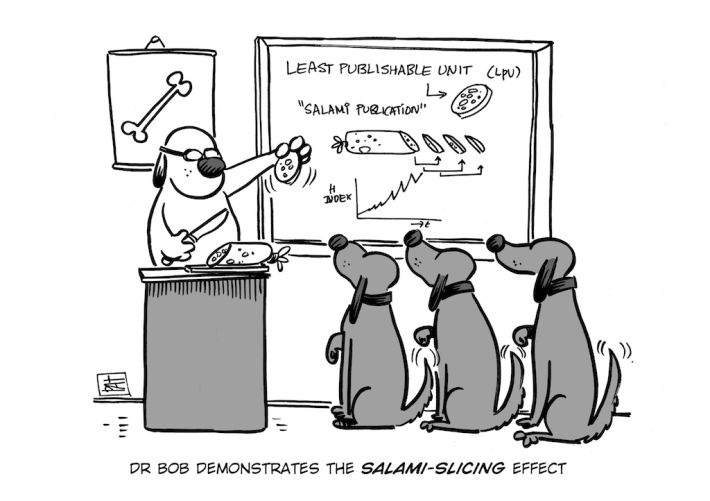The six major scientific misconducts

The six major scientific misconducts

There are various
types of scientific misconduct...(in Japanese). We can demonstrait the six major scientific misconducts mentioned below.
1) Falsification,
KAIZAN in Japanese (改竄)
2) Fabrication,
NETSUZO in Japanese (捏造)
3) Plagiarism,
HYOSETSU in Japanese (剽窃)
4) Data theft,
DETA NO SETTOU (データの窃盗)
5) Gift
authorship, MEIGI-GASHI in Japanese (名義貸し)
6) Honorary authorship, MIIYO-CHOSHA in Japanese (名誉著者)
and othes.
The US Office of Research Integrity and other institutions define these words of misconducts mentioned below.
| 1) Falsification, KAIZAN in Japanese (改竄) | 1) Falsification is manipulating research materials, equipment, or processes, or changing or omitting data or results such that the research is not accurately represented in the research record. |
| 2) Fabrication, NETSUZO in Japanese (捏造) | 2) Fabrication is making up data or results and recording or reporting them. |
| 3) Plagiarism, HYOSETSU in Japanese (剽窃) | 3) Plagiarism is the appropriation of another person's ideas, processes, results, or words without giving appropriate credit |
| 4) Data theft, DETA NO SETTOU (データの窃盗) | 4) Data theft is the act of stealing information stored on computers, servers, or other devices from an unknowing victim with the intent to compromise privacy or obtain confidential information. |
| 5) Gift authorship, MEIGI-GASHI in Japanese (名義貸し) | 5) Gift authorship' is one of the most common kinds of unethical behaviour seen in academic publishing. In this practice, an author is added to a paper when they have not actually made a contribution to the work, perhaps to reward a collaborator, return a favour, or for some other gain. |
| 6) Honorary authorship, MIIYO-CHOSHA in Japanese (名誉著者) | 6) Honorary authorship, also known as guest authorship, occurs when a person is listed as an author who has not provided any significant assistance to the study. |
The explanation of
this page is over. Thank a lot to participate this lesson.
Links
Bibliography
Other informations